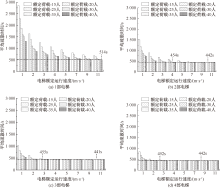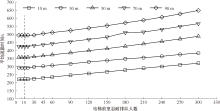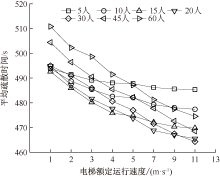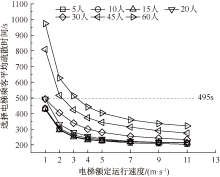| [1] |
SHEN Yixin, MA Jian, FANG Hongqiang, et al. Deep reinforcement learning based train door adaptive control in metro tunnel evacuation optimization[J]. Tunnelling and Underground Space Technology incorporating Trenchless Technology Research, 2022, 128(10):DOI: 10.1016/J.TUST.2022.104636.
|
| [2] |
史聪灵, 钟茂华, 涂旭炜, 等. 深埋岛式地铁车站站台火灾时烟气蔓延数值分析[J]. 中国安全科学学报, 2006, 16(3):17-22.
|
|
SHI Congling, ZHONG Maohua, TU Xuwei, et al. Simulation of smoke movement and ventilation in fire at island-platform of deep buried metro station[J]. China Safety Science Journal, 2006, 16(3):17-22.
|
| [3] |
钟茂华, 史聪灵, 涂旭炜, 等. 深埋岛式地铁车站突发事件时人员疏散模拟研究[J]. 中国安全科学学报, 2007, 17(8):20-25.
|
|
ZHONG Maohua, SHI Congling, TU Xuwei, et al. Simulation study on human evacuation during emergency in deeply buried-inland metro station[J]. China Safety Science Journal, 2007, 17(8):20-25.
|
| [4] |
张欢. 深埋地铁车站人员紧急疏散计算[J]. 都市快轨交通, 2014, 27(1):19-23.
|
|
ZHANG Huan. Study on human evacuation calculation during urgency in deeply buried metro station[J]. Urban Rapid Rail Transit, 2014, 27(1):19-23.
|
| [5] |
叶伟. 地下空间楼梯人员上行疏散效率研究[D]. 重庆: 重庆大学, 2019.
|
|
YE Wei. Study on up-going evacuation efficiency of stair personnel in underground space[D]. Chongqing: Chongqing University, 2019.
|
| [6] |
杨晓霞, 蒋海龙, 李永行, 等. 地铁站乘客沿楼梯上行疏散时间预测及安全性评估[J]. 中国安全科学学报, 2023, 33(5):168-173.
doi: 10.16265/j.cnki.issn1003-3033.2023.05.1263
|
|
YANG Xiaoxia, JIANG Hailong, LI Yongxing, et al. Prediction of evacuation time and safety evaluation for passengers ascending stairs in subway stations[J]. China Safety Science Journal, 2023, 33(5):168-173.
doi: 10.16265/j.cnki.issn1003-3033.2023.05.1263
|
| [7] |
CHEN Juan, MA Jian, LO S M. Event-driven modeling of elevator assisted evacuation in ultra high-rise buildings[J]. Simulation Modelling Practice and Theory, 2017, 74:99-116.
|
| [8] |
张鹏, 朱昌明. 高层建筑危急情况下的电梯疏散系统[J]. 中国安全科学学报, 2004, 14(8):78-81,3.
|
|
ZHANG Peng, ZHU Changming. Elevator evacuation system in high-rise buildings during emergency[J]. China Safety Science Journal, 2004, 14(8):78-81,3.
|
| [9] |
陈娟, 汪静, 马剑, 等. 基于模拟仿真的医疗建筑疏散策略对比研究[J]. 安全与环境学报, 2023, 23(9): 3215-3223.
|
|
CHEN Juan, WANG Jing, MA Jian, et al. Comparative study of evacuation strategies for medical buildings based on simulation[J]. Journal of Safety and Environment, 2023, 23(9): 3215-3223.
|
| [10] |
MA Jian, LO S M, SONG Weiguo. Cellular automaton modeling approach for optimum ultra high-rise building evacuation design[J]. Fire Safety Journal, 2012,54:57-66.
|
| [11] |
MOSSBERG A, NILSSON D, WAHLQVIST J. Evacuation elevators in an underground metro station: a virtual reality evacuation experiment[J]. Fire Safety Journal, 2021, 120: DOI: 10.1016/j.firesaf.2020.103091.
|
| [12] |
张海滨, 王叶涵, 张扬, 等. 不同埋深的地铁车站疏散效率研究[J]. 安全与环境学报, 2023, 23(4):1219-1224.
|
|
ZHANG Haibin, WANG Yehan, ZHANG Yang, et al. Evacuation efficiency of subway station considering the influence of depth[J]. Journal of Safety and Environment, 2023, 23(4):1219-1224.
|
| [13] |
林志阳, 刘正, 房志明, 等. 行人和交通疏散仿真软件研究综述[J]. 中国安全科学学报, 2022, 32(9):100-110.
doi: 10.16265/j.cnki.issn1003-3033.2022.09.2993
|
|
LIN Zhiyang, LIU Zheng, FANG Zhiming, et al. Review of pedestrian and traffic evacuation simulation software[J]. China Safety Science Journal, 2022, 32(9):100-110.
doi: 10.16265/j.cnki.issn1003-3033.2022.09.2993
|
| [14] |
BRAILSFORD S, CHURILOV L, DANCERFIELD B. Discrete-event simulation and system dynamics for management decision making[M]. New York: John Wiley & Sons, 2014:248-279.
|
| [15] |
LOO B P, WANG Hui. Dynamics of in-station time within metro systems: measurement and determining factors[J]. Tunnelling and Underground Space Technology incorporating Trenchless Technology Research, 2024, 153:DOI: 10.1016/J.TUST.2024.106006.
|
| [16] |
LI Qian, JI Changxu, JIA Limin, et al. Effect of height on pedestrian route choice between stairs and escalator[J]. Discrete Dynamics in Nature and Society, 2014, 2014: 1-6.
|
| [17] |
周雨阳, 何姗姗, 赵忞赫, 等. 轨道交通换乘站楼梯异质客流仿真[J]. 计算机仿真, 2023, 40(2):203-207,274.
|
|
ZHOU Yuyang, HE Shanshan, ZHAO Minhe, et al. Simulation of heterogeneous passenger flow on stairs of rail transit transfer station[J]. Computer Simulation, 2023, 40(2):203-207,274.
|
| [18] |
王子甲. 基于行人仿真的轨道交通车站设施规模及布局研究[D]. 北京: 北京交通大学, 2013.
|
|
WANG Zijia. Study on facility scale and layout of urban rail transit station based on pedestrian simulation[D]. Beijing: Beijing Jiaotong University, 2013.
|
| [19] |
李涛, 陈娟, 马剑, 等. 地铁车站旅客紧急疏散效率实验研究[J]. 交通运输系统工程与信息, 2016, 16(3):228-234.
|
|
LI Tao, CHEN Juan, MA Jian, et al. Experimental study of passenger evacuation efficiency in a metro station[J]. Journal of Transportation Systems Engineering and Information Technology, 2016, 16(3):228-234.
|































